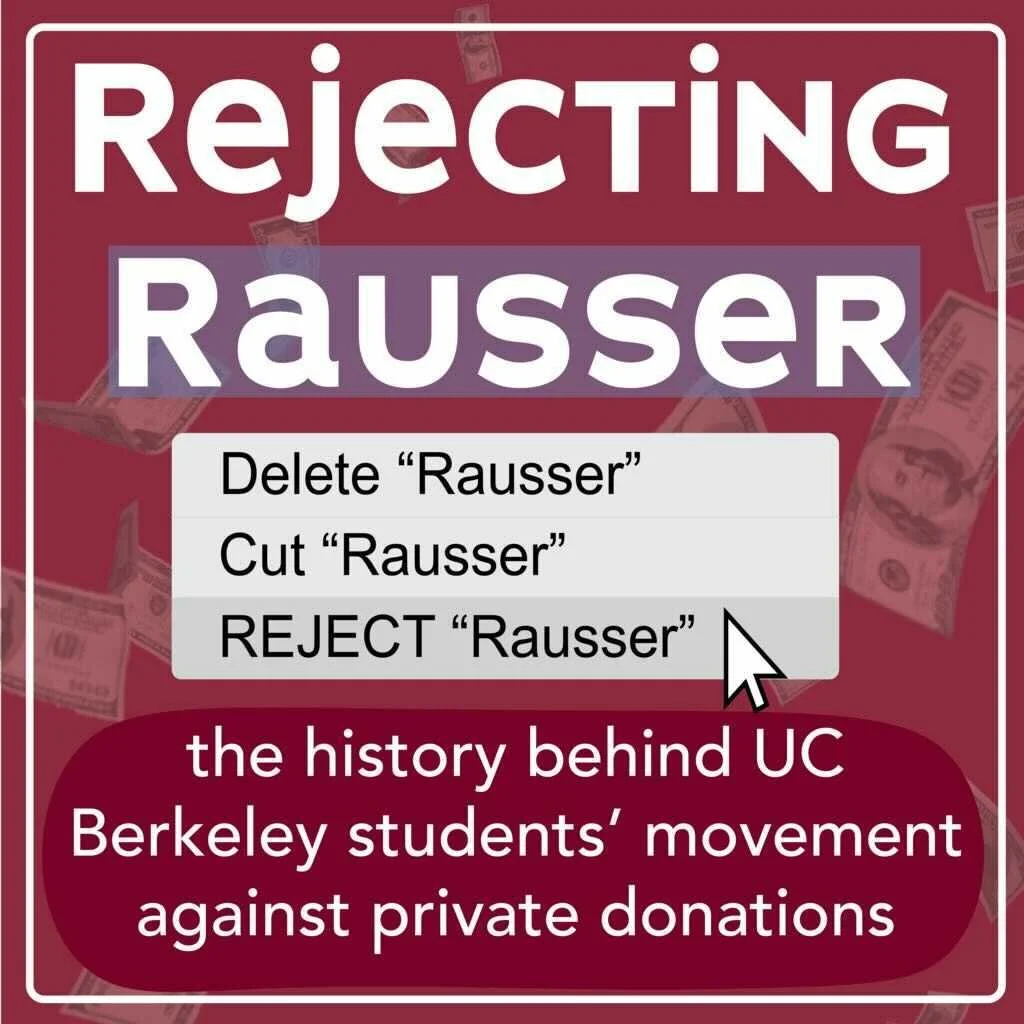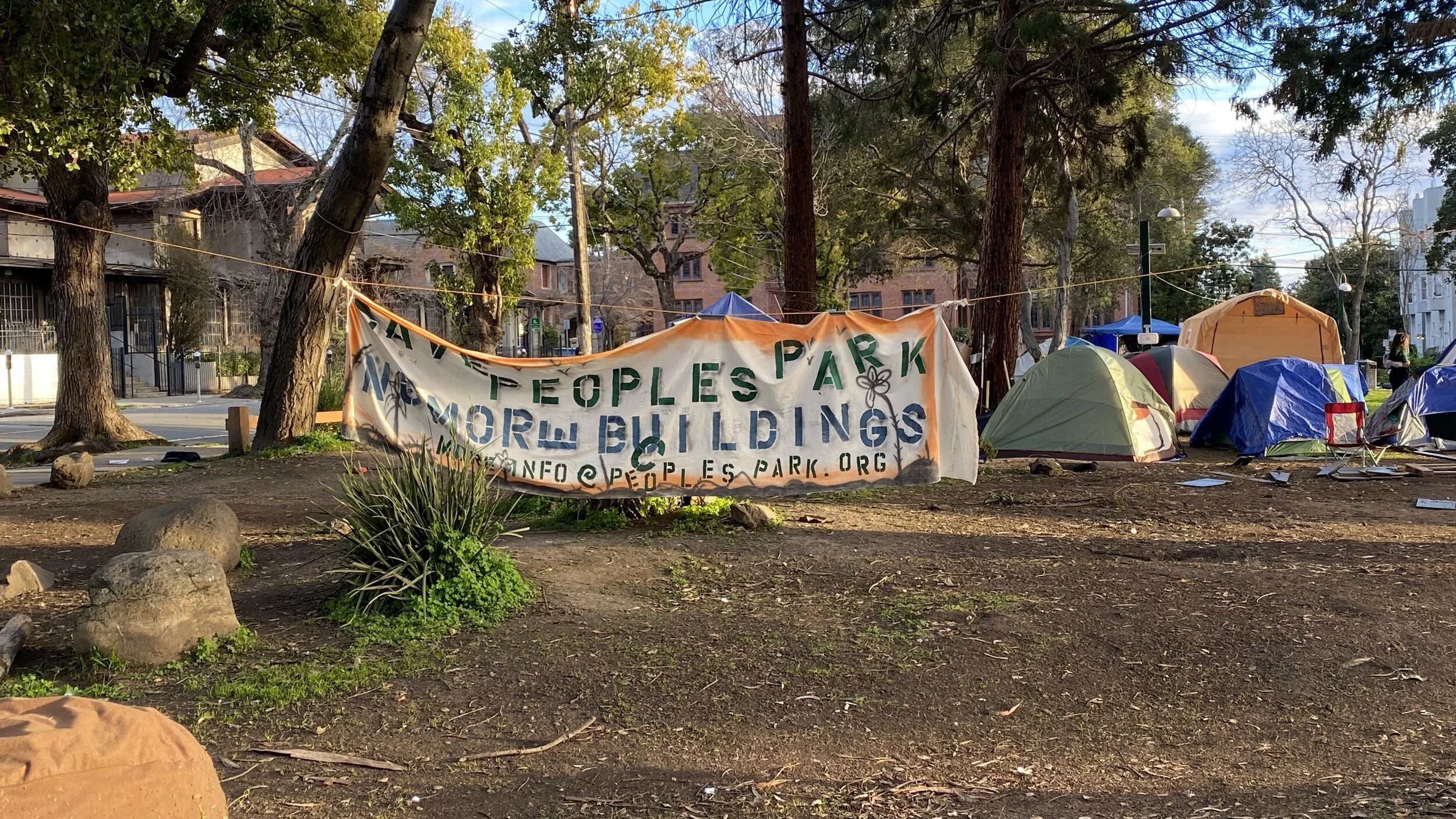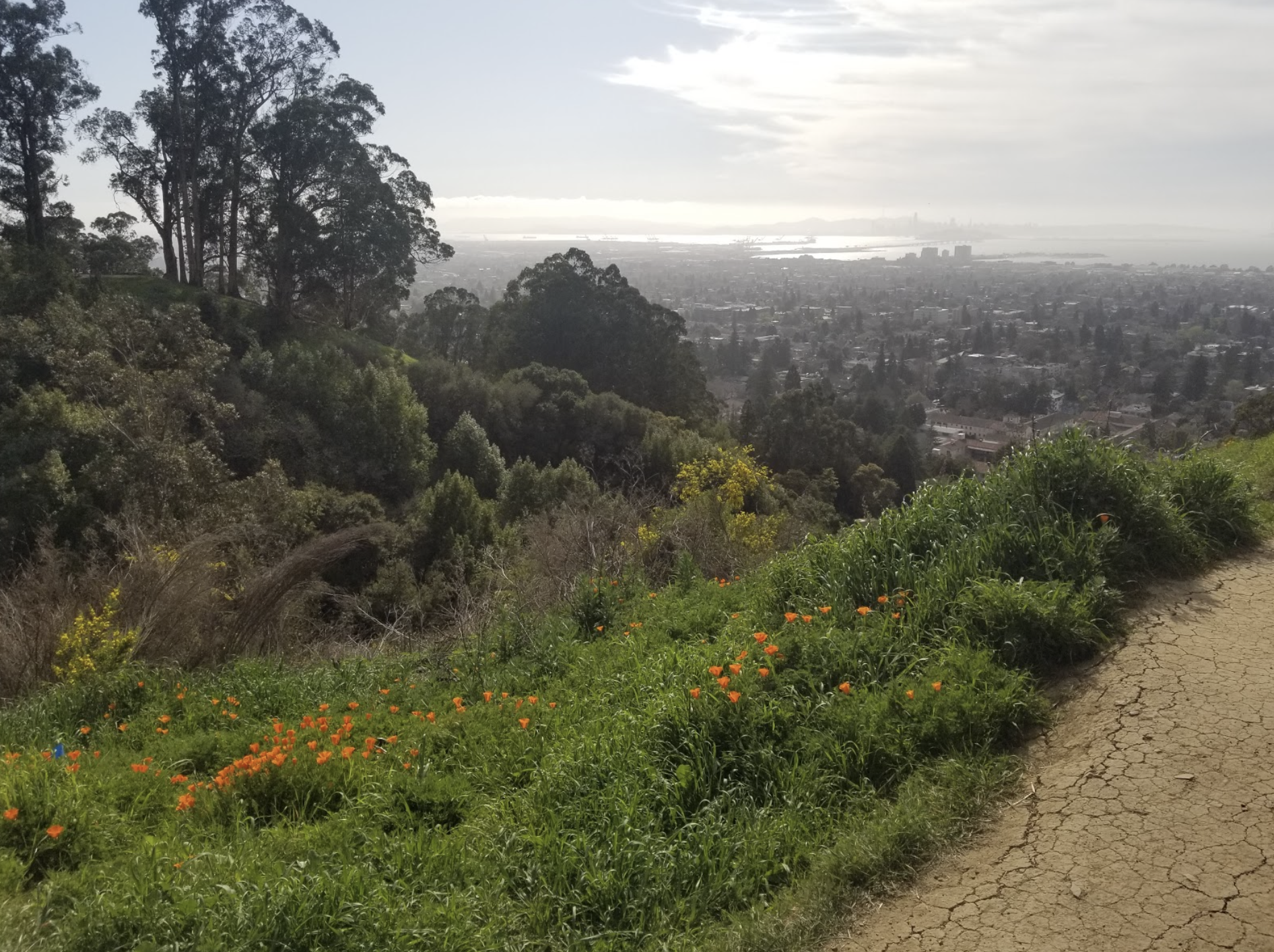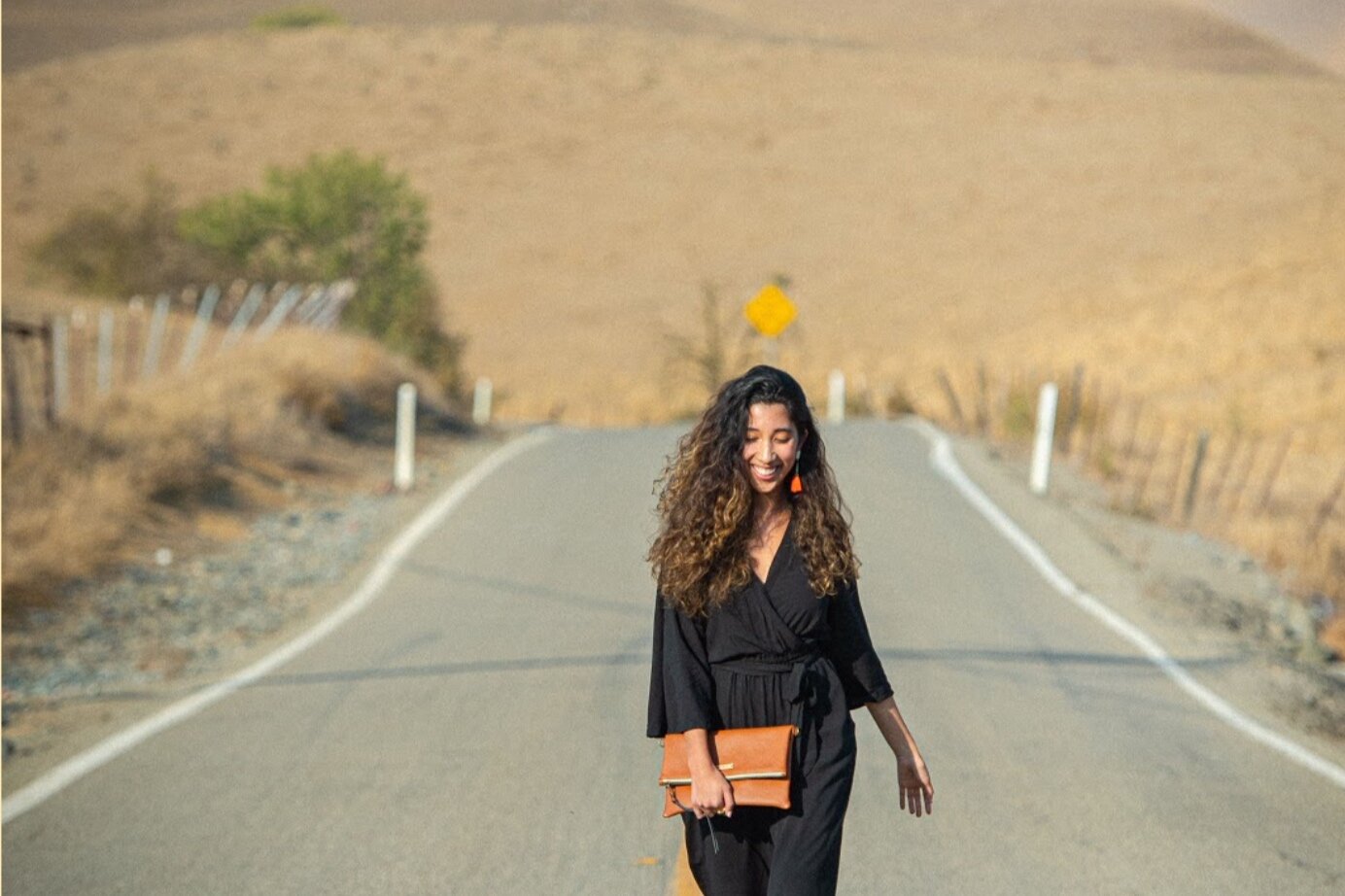Best of The Leaflet
While in 2024, The Leaflet transitioned to be the eco art collective we are today, we come from a lineage of creative and cutting-edge student environmental writers. These are some of our best and most timeless. Featuring previous online Leaflet publications & re-digitized pieces from the SERC Blog archive.
Over the past few years, land acknowledgements have become commonplace at UC Berkeley. You may see them in email signatures, lecture slides, and introductions to webinars. All too often, once the slide is clicked through or the next guest speaker takes the stage, the land acknowledgment, or any further information regarding Indigenous land and sovereignty, is not brought up again…
Climate change, and the threat of wildfire that accompanies it, is often equated to a great, existential war between the extreme forces of nature and humanity. Much like wartime commendations of the men and women fighting on the frontlines, wildland firefighters are celebrated as the last line of defense on the wilderness frontier…
The intersection between the environmental and feminist movements may seem clear. For example, in climate-related disasters women are 14 times more likely to perish. However, the ecofeminism framework illustrates that this connection runs much deeper…
It’s a brisk, overcast Autumn morning -- stiff legs peel reluctantly out of their beds, buses lurch to their stops, and Berkeley begins to bustle. Through the cold and cloudy hues, warmth pours out of the Berkeley Organic Market. Smells of baking pita bread and sounds of Yemeni dance music beckon passersby in…
On October 28, 2021, the Berkeley Food Institute brought together a panel of Black farmers, organizers, scholars, and activists to bring awareness to the ongoing struggles of Black agrarians and share their stories of anguish, resilience, and hope. Because the majority of Black farmers reside in the southern United States, their battle is one that is rarely discussed among west coast academic institutions…
East Bay oyster banks are steeped in history rooted in the precolonial lives of Indigenous communities, and they are witnesses to the rise of what is now the modern day East Bay. Recent development projects and infrastructure have fundamentally altered the ecology of the oyster banks and have destroyed several traditional Ohlone shell mounds, formations composed of shell and soil formed by Indigenous groups once living along the coastal East Bay.
Los Angeles is one of the largest cities in the United States and is widely known due to its portrayal in the media: a place people should visit if they aspire to be movie stars, Instagram models, or have a high social media following. It is this portrayal that has accelerated the green gentrification that is occurring to attract the young adult population.
Hiking through the Berkeley Fire Trails always seems like a relaxing experience after a busy day of online classes, meeting, and projects. Coast live oak, deer, and other chaparral wildlife are certainly comforting sights. But during dusk and dawn, it is not uncommon for a crepuscular predator to roam through the hills.
In fall of 2019, UC Berkeley undergraduate students formed “Pour Out Pepsi,” (POP) a campaign dedicated to breaking UC Berkeley’s corporate partnership with PepsiCo, Inc. As UC Berkeley votes to renew their contract with PepsiCo, POP is showing the campus that when universities function like businesses, they betray their commitments to their students.
For five years, two peregrine falcons named Annie and Grinnel have been living peacefully in the Campanile on Cal’s campus. Peregrine falcons usually mate for life, and this couple has had five successful breeding seasons on campus, resulting in thirteen chicks being born. On April 19th, triplets hatched and can be seen on the livestream.
In the last year, climate activism has become more prominent, especially among young people to make their voices heard seeing that they will be the generation that is highly impacted by global warming and climate change. Youth vs Apocalypse (YVA) is an environmental justice organization started by high school students from Oakland that have fought against inequities perpetuated by environmental issues.
One of the largest facets of the environmental protection movement is biological conservation through protecting vulnerable species. There are many organizations and leaders dedicated to protecting wildlife and their ecosystems. The Gulf of California is a dynamic region where biological conservation, social justice, and other initiatives often collide.
In March 2020, amid campus cries for a cost of living adjustment (COLA) for graduate students and the emergence of COVID-19, UC Berkeley’s College of Natural Resources (CNR) flaunted a 50 million dollar donation from former Dean Gordan Rausser that they would be accepting in exchange for the addition of his name to the College.
It has been a big year for parks. In the past twelve months of limited indoor activity, many people have rediscovered the joy of gathering in neighborhood and regional green spaces for leisure time, exercise, or a socially distanced hangout.
As the University tries to push through development, the fight for social and environmental justice must rise to meet the moment
If you ask Berkeley students where they like to hike, chances are that someone will mention the Berkeley Fire Trails or Tilden Regional Park. These areas are prominent fixtures in Berkeley student life as hotspots for hikers, runners, nature-lovers, and overworked students alike, but there is much more to them than meets the eye. There is history behind Berkeley’s natural spaces - and all of California - that is valuable and important to be conscious of when considering their resilience in the face of forces such as global warming and the climate crisis which already impact our daily lives.
Sex is fun, good for your health, and often a key part of the college experience. However, it doesn't come without its risks, and safe sex is incredibly important for personal health and the health of your partner. Many options for safe sex however, come at the expense of the health of the environment. Common condoms, lubricants, and sex toys often contain toxic chemicals that can pose harm to water, air, and soil. There are however several options for more sustainable and safe sex.
Social media influencers and dietitians alike have made avocados the quintessential health food. Pinterest boards of the abundant ways to eat avocados--from guacamole to avocado toast-- have increased sales and popularity of the fruit. While seeming like a harmless commodity, this growth in demand has had environmental justice implications for the farmers who grow these fruits.
This year, Prince William, Duke of Cambridge, launched a new project: the Earthshot Prize. The Earthshot prize at its core is simple: if you come up with an innovative solution to five core environmental issues you can win one million pounds. These core issues, or “Earthshots,” are: protect & restore nature, clean our air, revive our oceans, build a waste-free world, and fix our climate.
Anyone following the 2020 US election knows that Arizona flipped blue for Democratic nominee Joe Biden. However, they may not have heard about the role Native Americans in the Navajo Nation played in turning the swing state blue for the second time in seventy years, where, despite facing the most severe rates of COVID-19 in the country, reportedly 60-90% of their eligible registered voters went for Biden. The Democratic party and liberals everywhere owe a tremendous debt of gratitude to the Navajo Nation, and this debt should only be repaid by supporting the Land Back movement and the fight for Indigneous land sovereignty everywhere.
If you’re active in the world of social media environmentalism, chances are you’ve come across Kristy Drutman. She’s a Jewish and Filipina American climate activist, and she runs the popular Instagram account “@browngirl_green,” where she posts about sustainable living and environmental awareness. Over the past three years, she’s amassed over 50,000 followers and has been a powerful voice for environmental justice and activism, speaking at conferences and universities across the country and hosting her own workshops. I spoke with her over the phone about how she got started, the lifestyle changes she’s made, and the power of social media as an educational tool.
I hesitate to write this column. I hesitate to write it, and even more to publish it, because it will reveal me as a person who is concerned about climate change. But isn’t that something to be proud of - not ashamed? Don’t we need more people engaged in this battle, not fewer?
After the fires of November 2018, and the power outages of last fall, I set out to build a high value, versatile disaster kit that I could store in my closet and carry on my back. Here’s how I did it, and how you can too.
This weekend, I finished The Overstory. One character has a worldview that I very much share: humans are destroying this planet, and we won’t turn the ship around unless seemingly-impossible steps are taken. To be frank, I don’t think these steps will be taken, or at least not until indescribable suffering has occurred.
Going zero-waste might not be the move for you right now, but incremental change is still impactful, especially when we take collective action. Let’s start with grocery shopping: here are some tips to reduce your carbon footprint while grocery shopping at Berkeley Bowl! These tips can also apply to non-Berkeley Bowl stores.
For thousands of years, Mauna Kea has been a cultural and spiritual mecca for the native Kanaka Maoli people. It’s a place whose ecosystem has been traditionally managed by the Kanaka Maoli, and has been threatened in recent years by invasive plants and increasingly extreme weather patterns. It’s a religious site where tribal members have traditionally practiced services, a cultural center for celebration and mourning, and the site of some human remains from Kanaka Maoli tribal members buried there. It’s also where some UC Berkeley linked organizations want to build a telescope.
I was recently granted the opportunity to become involved with The Green Life program, San Quentin’s environmental literacy program for the prison’s inmates. Started by Angela Sevin in 2009, The Green Life is one of the few environmental education programs that exists within a United States prison.
As an Environmental Science major who is deeply involved in a multitude of environmental student orgs, I find myself immersed in a community of mostly upper middle class white females. I have found myself in so many spaces where the topics of race and inaccessibility to the environmental movement are not discussed and often pushed under the rug when brought up, because nobody really knows how to address them.
As an Environmental Science major who is deeply involved in a multitude of environmental student orgs, I find myself immersed in a community of mostly upper middle class white females. I have found myself in so many spaces where the topics of race and inaccessibility to the environmental movement are not discussed and often pushed under the rug when brought up, because nobody really knows how to address them.






























When you think of mindfulness, what do you picture? Maybe someone meditating and practicing deep breathing, or someone journaling by candlelight before bed. Or, maybe someone in glittering platform heels pole dancing with a hypnotic flow to Hiatus Kaiyote…